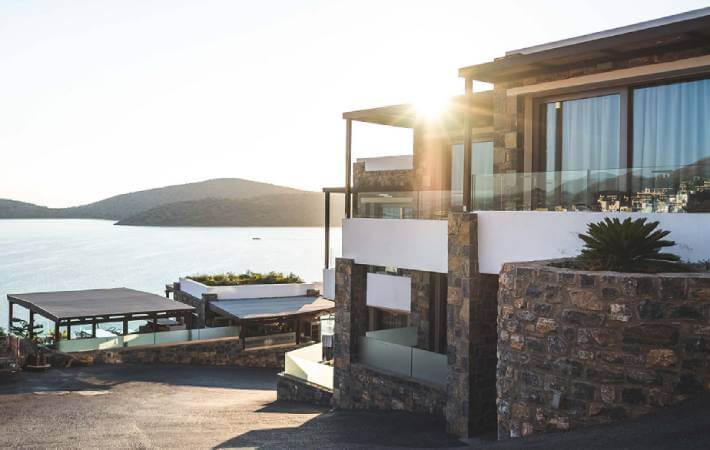
4 Easy Steps to Start Your Investment Property Journey
The investment property world is still quite new and many people don’t know how to buy properties. Luckily, our mortgage advisors can help with your investment goals! We know you’re looking for a real estate investor who’s not just different, but top-of-the line. That is why we set our standards so high to give your investment property needs the attention they deserve from start to finish. The team here has been doing this type of work long enough and understands what it takes in order provide exceptional service when investing alongside clients like yourself.
Here are four easy steps to start your investment property journey:
- How to secure a mortgage
- How to find the best market to purchase in
- How to find the right property
- How to evaluate the profit you will make
Step 1: Securing a Mortgage
Before securing a mortgage you need to decide how you plan to utilize the property itself. The first option being, you could buy this property as a second home that will act like your vacation getaway and then rent it out on the side when not in use. The second option, you could buy the property strictly as an investment, with no plans to use it yourself. You would turn this one-time home into a moneymaker by renting out rooms through Airbnb and maybe using it on weekends or holidays when you need extra space!
Whether you’re looking for a short term or long-term investment, it’s important to understand the different types of financing available. The type that will work best with your strategy is based on how much time until rent payment and what purpose the property serves as an asset.
Choosing the appropriate financing option is crucial, there are two options:
- Second Home Financing- acquire as a second home with 10% down payment
- Investment home financing- acquire as an investment property with a 20% down payment
Second Home Financing
If you choose the second home financing option. You can take advantage of a lower down payment (usually around 10%). This kind of financing comes with much less interest rates than what’s usually associated with first Time Homebuyers’ programs – making it an even better option for those who are looking. However, with this kind of financing you can't use any prospective rental income that comes through the property to help pay monthly payments. This means it will be up to your current cash flow and not anything extra on top. Another thing to consider is your DTI or debt-to-income ratio. Your debt-to-income ratio is an important factor when it comes to qualifying for mortgage financing. For example, if you have $10,000 in pretax monthly income and up to $5,000 can be used on paying off your credit card balances or other bills that will show as expenses during the calculation process (which includes this new mortgage payment). This means you will need to have the ability to pay for the additional property while keeping that ratio under maximum.
Investment Home Financing
The second way to finance your investment home is through Investment Home Financing. If you're planning on using the property as an investment, put down more money – 20%. And if want five or more mortgage loans running at once? Start with 25% down for each new project! Investment property loans are often the best option for people who want to have money invested in real estate. The interest rates on these types of mortgages tend not only be 0.5% higher but also allow you to use rental income as part of qualifying requirements which can really help put your finances on top. How do we know how much to give you credit for on rent? We do this by getting an appraiser, they will let you know how much your property would rent for in a long-term renting situation. Then, we can add up to 75% of projected rents which helps keep debt ratios under 50%. However, you can’t use your investment property income to qualify for the loan. The income is too inconsistent and unpredictable, which makes it impossible to get an accurate number on how much money you could make from this opportunity.
Step 2: How to find the best market to purchase in
The first thing you should consider when looking for an Airbnb property is whether or not it's located in a place that has significant tourism. If one of the major supporting economic factors are travelers, then this will be worth your while because they can help pay off some costs associated with hosting guests. The impact of a lack in local tourism would mean not only do you lose out on potential revenue but also run into issues with regulations. Without people renting from your property, there may be less pressure to keep up appearances and follow complex rules set forth by housing associations which could put further strain on already struggling businesses like yours. The reason this is such an important issue? It’s how we’re able to maintain control over our own properties while still providing affordable accommodations; something everyone deserves regardless if they have money or not. Third, you could run into a lack of local support from those who live in the area. They are unlikely to be supportive towards Airbnb entrepreneurs that would bring more tourists their way and potentially hurt business for them as well. When you invest in a location that relies on the local tourism industry, it’s important to consider how much money people are making from hosting tourists. The locals will know someone who works at Airbnb and understands their role within this ecosystem – they’ll understand what kind of income supports families here. Not only will they be more likely to rent out their properties again, but the renters who visit that area are already familiar with local policies and regulations. This means you could potentially get repeat guests! Some popular Airbnb destinations include big cities like Austin or Orlando as well state parks & national forests- which makes sense because these locations have plenty going on outside traditional hotels too offer visitors.
Step 3: How to find the right property
You need to know the invest-ability of your market before you start investing in it. If people can’t afford homes there, then they’ll never be able make money through buying or renting out property–and that’s not what we want. A low-investment area will only ever succeed when its residents have enough funds available so as not affect their standard life too drastically over time. A great location for your Airbnb isn’t enough if people can't afford to purchase homes in that area. You need a market with high invest-ability so more travelers will want stay at YOUR place. The middle ground is where you’ll find your dream home. The perfect place to land an Airbnb property, with enough room for both guests and owners alike!
Step 4: How to evaluate the profit you will make
Lastly, you should make sure that the market your house is in has potential for growth. If a stale or oversaturated industry surrounds it then there won't be much opportunity to grow over time and this could hurt both short term profitability as well long-term success rates on revenue streams going forward with any investments made into those areas at hand. When you look at the market, notice whether or not there’s been a lot of growth in Airbnb income. The more increased flow-through from this service to your pocket – either as direct payments or commissions on rental agreements signed by guests who book through it–the better. It is important to consider the market when listing an Airbnb property. If you’re looking for something in a down time, this may not be your best bet because of how fluctuating markets can get and that factoring unit numbers into revenue per unit could lead one towards choosing more lucrative properties with fewer guests arriving at their doorsteps. Overall, you need to look at the growth potential of the location to make sure that you'll be able to make more = money over time.
Bottom Line:
You’re now equipped with the four key steps to look for when buying an investment property. When you’re ready to get started on your home financing journey click the button below to Apply!

